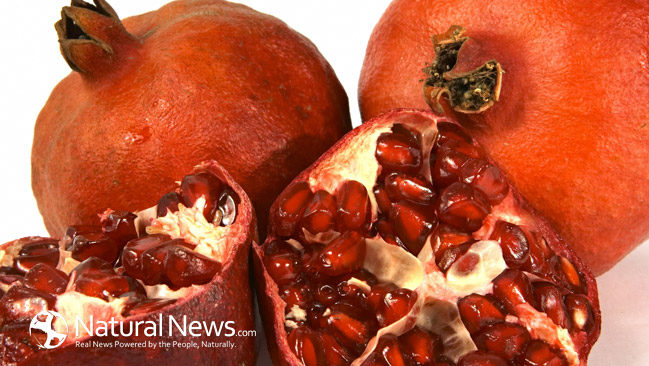Many of us don’t as much as eye pomegranates in the produce department. If we do, our quick blink at the odd-looking fruit is often accompanied by the same questions one might put to a pile of chicory: Huh?! What do I do with that?
Possibly among the most underrated and misunderstood fruits, the pomegranate, Punica granatum, has actually been cultivated for thousands of years. Its earlier name, pomum (Latin for apple) granatum (meaning seeded), eventually became Punica granatum, which refers to the Phoenicians who expanded its cultivation. Pomegranates have been called “divine fruit” and are posited to have been found in the Garden of Eden (instead of apples) and have been found in Egyptian tombs. Their first chronicled use is in Persia.
On the health side, and while only its seeds and juice are the most palatable, pomegranates explode with fiber, vitamins C and K, folate, potassium, nutrients, antioxidant flavonoids—which are said to be anti-inflammatory, polyphenols—also antioxidant, and phytochemical compounds. A single glass of pomegranate juice reportedly has more antioxidants than a serving of red wine, green tea, blueberries, acai berries or cranberries.
In studies, a pomegranate compound called punicalagin and another called punicalin were shown to benefit the heart and blood vessels. They are said to lower cholesterol and blood pressure, as well as inhibit or facilitate the dissolution of artherosclerosis, or plaque-related heart blockages. Studies have shown that pomegranate consumption can impede breast, colon and prostate cancer, and leukemia.
In recent years, pomegranate juice (which can be tart and was popularly used in Armenian, Persian and Indian cuisine long before we discovered it) has been promoted as a health, skin and hair elixir. Pomegranate consumption is said to slow the progression of Alzheimer’s disease and limit osteoarthritis. Ayurvedic applications use the bark of the pomegranate tree and the fruit’s rind to combat diarrhea, dysentery and intestinal parasites. The seeds and juice are said to stop gum and nosebleeds, tone skin and can even treat hemorrhoids. Overall the fruit in its various forms is said to increase memory and slow down the aging process.
Pomegranates and prosperity
Pomegranate is mentioned in Babylonian texts, the Homeric Hymns and the Book of Exodus. Ancient Egyptians saw pomegranates as a sign of prosperity and ambition, depicting it in tomb paintings and in other places. Turkish and Greek cultures also see pomegranate seeds as symbolizing prosperity and good fortune, and on New Year’s Eve a pomegranate is traditionally smashed on the floor, just inside the front door, to reveal its lucky seeds – which can number anywhere from 200 to 1,400! Though the flower, leaves, bark and peel are all edible, typically the “sarcotest,” or sweet, water-laden pulp that surrounds the seeds, is what we eat – often swallowing the seeds along with it if desired. In fact dried seeds – available in many specialty food markets and health food stores – make a great addition to trail mix, blended into yogurt, or as an ice cream and salad topper. Or, just cut into a pomegranate and scoop out the juicy seeds yourself.
Sources:
https://www.drfuhrman.com/library/article19.aspx
http://authoritynutrition.com/12-proven-benefits-of-pomegranate/





